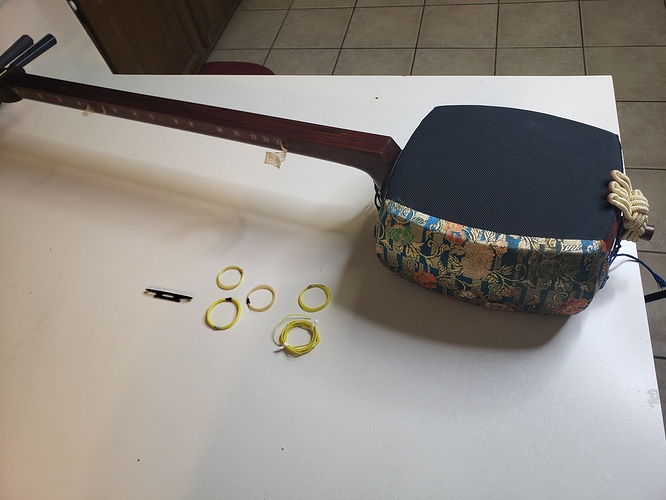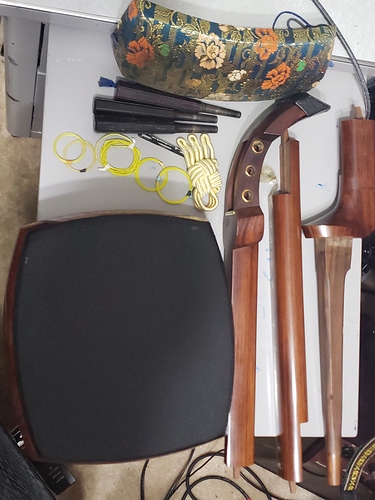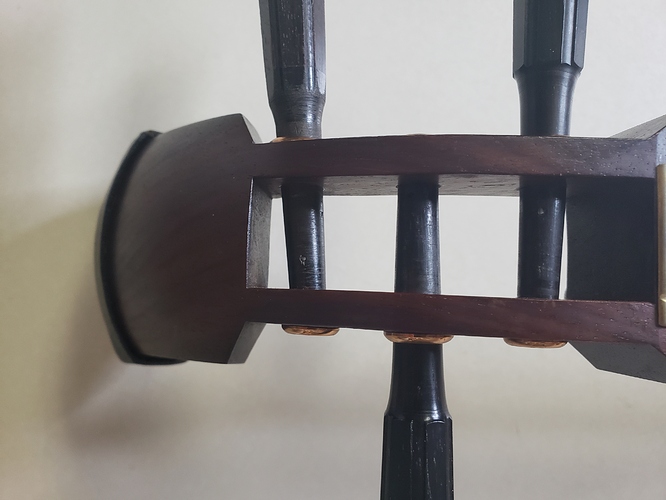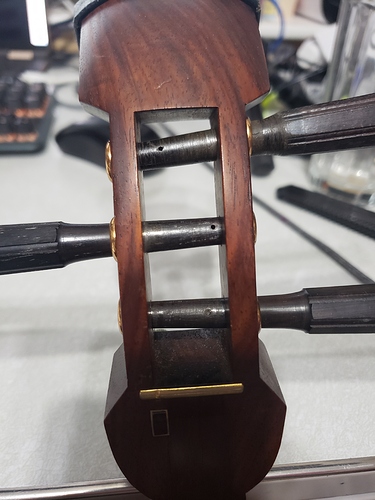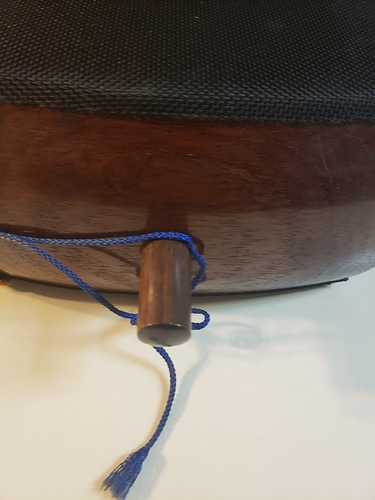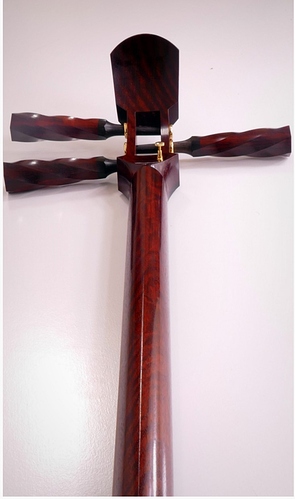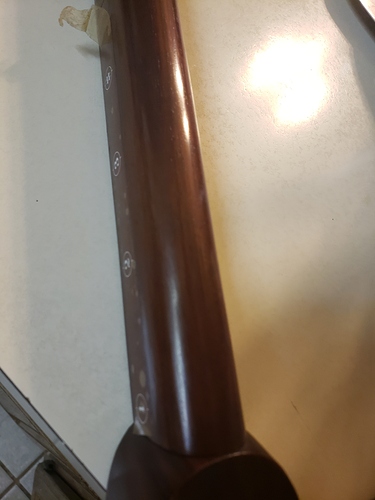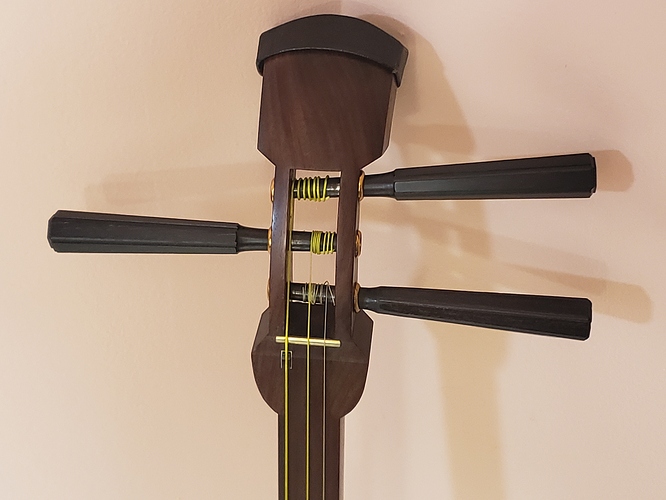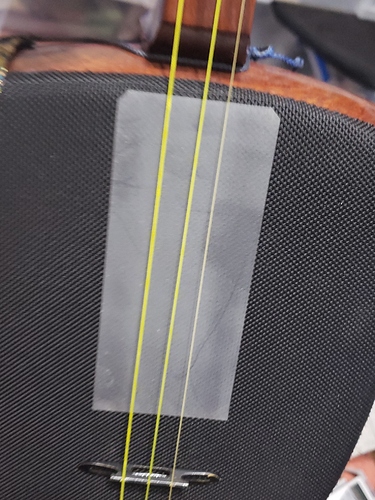I just received a used Minyo Shamisen in great condition with new synthetic skins. I was lucky the seller offered the reskin free after I had purchased the item with torn skins, but he had already sent it for repair…
Very nice seller in Japan. This is my second purchase from him who will remain nameless on this forum…
I have a few general questions about the shamisen I purchased.
- How far in should the Itomaki fit inside the brass rings in the Tenjuh?
- How do I tell which Itomaki is for each string? Where should the hole for the string be for each one?
I noticed that the end of the Itomakis have these dot marks. Which strings are they for?
- If the skin tears in the future should I add a brass fitting onto the tail piece and dau? If I did that I would probably have to reduce the size of the part that fits through the hole in the dau so the size will still match the hole.
Question about the shape of the Chibukura and neck- Kyle mentions a V neck chibukura for the Akatsuki shamisen being in improvement. Could I modify the neck and chibukura on my shamisen to match that style? Has anyone made that modification to their Shamisen to make it easier to play after the fact? Any recommendations in doing that? https://bachido.com/store/akatsuki-shamisen
Kyle’s Akatsuki shamisen neck:
My neck:

